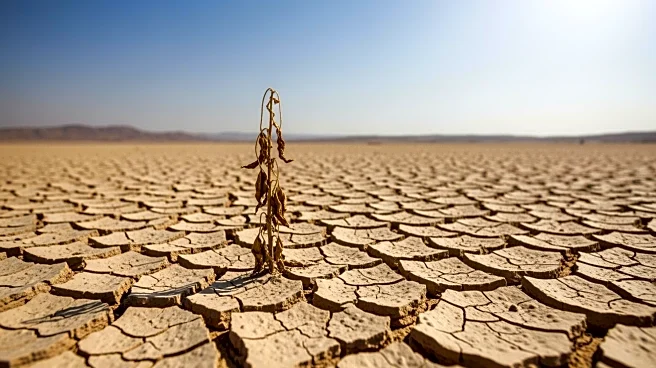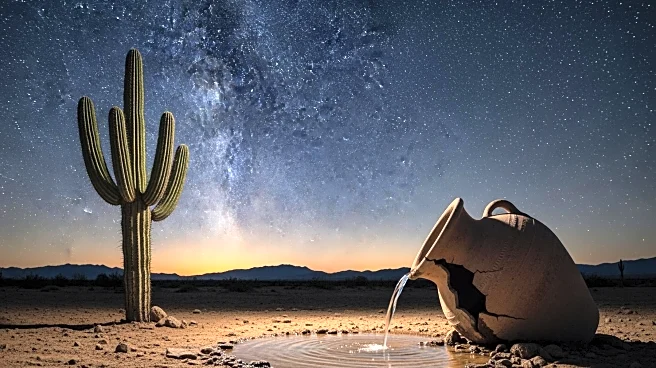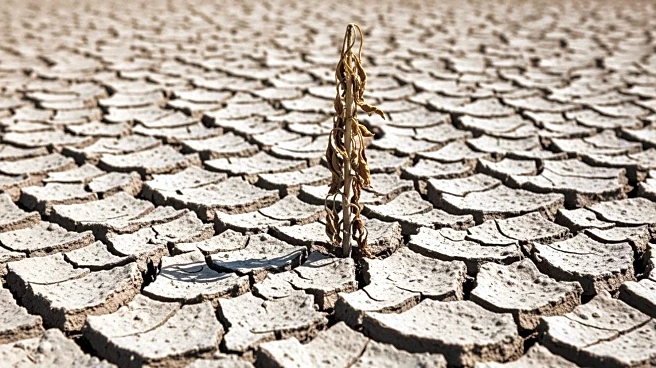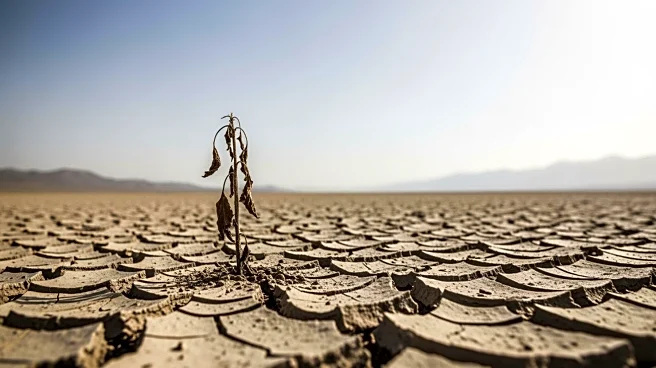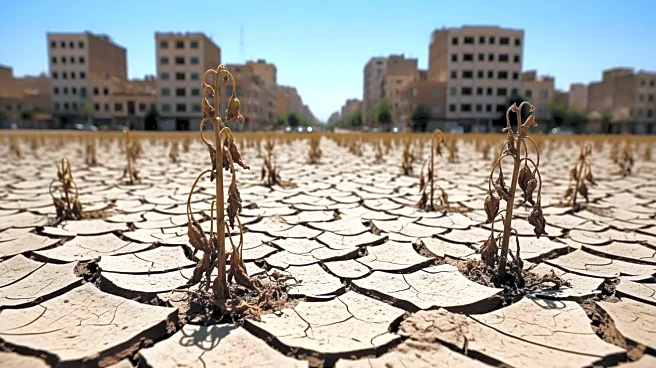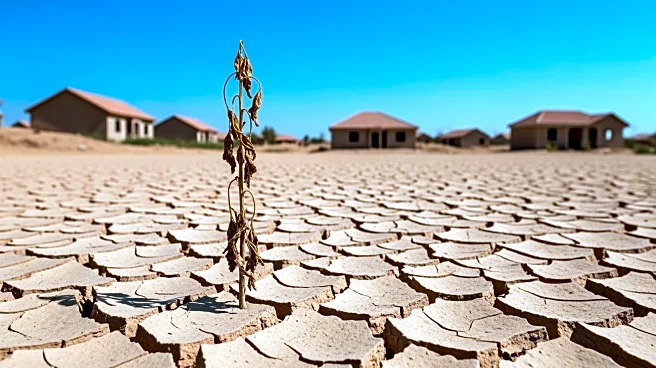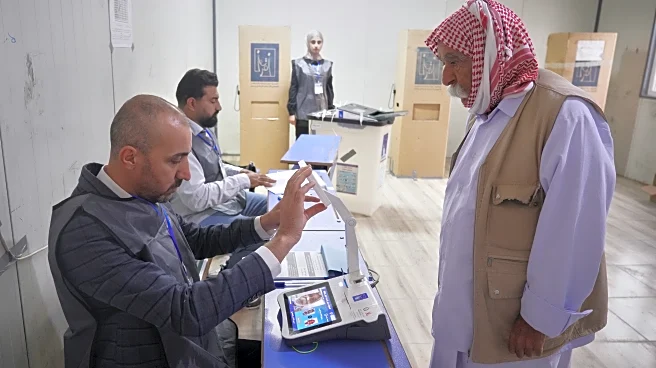What's Happening?
Iran is experiencing a severe water crisis, with major cities like Tehran and Mashhad facing critical shortages. Tehran's main dams are at only 5 percent capacity, leading to water rationing and calls
for rain prayers. The crisis has been exacerbated by decades of mismanagement, prolonged drought, and climate change. In Mashhad, water reserves have fallen below 3 percent, threatening the city's 4 million residents. The situation is so dire that Iran's president has warned of potential evacuation of the capital.
Why It's Important?
The water crisis in Iran poses significant risks to urban populations and agricultural output, which could impact food security in neighboring regions. As a major food producer, Iran's worsening situation threatens to reduce agricultural output, potentially leading to increased regional tensions over shared water resources. The crisis highlights the urgent need for conservation and infrastructure reform to prevent lasting shortages and mitigate the impact on millions of residents.
What's Next?
Iranian officials are hoping for winter rains to alleviate the crisis, but without substantial precipitation or urgent structural reforms, cities like Mashhad could face catastrophic urban droughts. Authorities are preparing contingency plans at the provincial level, underscoring the severity of the situation. Residents are being urged to conserve water, and potential rationing measures are being considered to manage the crisis.
Beyond the Headlines
The crisis underscores the long-term consequences of mismanagement and inadequate infrastructure planning. Iran's reliance on dam construction and groundwater extraction has left its water resources vulnerable to droughts. The situation calls for a reevaluation of water management policies to prioritize sustainable practices and conservation efforts.
